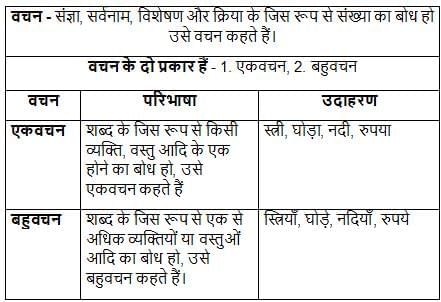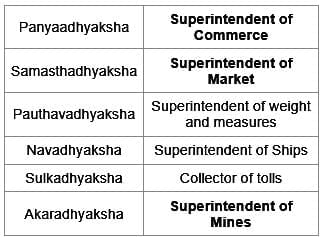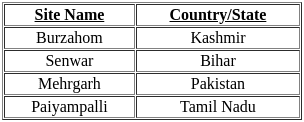MPTET Exam > MPTET Tests > MPTET Varg 1 History Mock Test - 1 - MPTET MCQ
MPTET Varg 1 History Mock Test - 1 - MPTET MCQ
Test Description
30 Questions MCQ Test - MPTET Varg 1 History Mock Test - 1
MPTET Varg 1 History Mock Test - 1 for MPTET 2025 is part of MPTET preparation. The MPTET Varg 1 History Mock Test - 1 questions and answers have been prepared
according to the MPTET exam syllabus.The MPTET Varg 1 History Mock Test - 1 MCQs are made for MPTET 2025 Exam.
Find important definitions, questions, notes, meanings, examples, exercises, MCQs and online tests for MPTET Varg 1 History Mock Test - 1 below.
Solutions of MPTET Varg 1 History Mock Test - 1 questions in English are available as part of our course for MPTET & MPTET Varg 1 History Mock Test - 1 solutions in
Hindi for MPTET course.
Download more important topics, notes, lectures and mock test series for MPTET Exam by signing up for free. Attempt MPTET Varg 1 History Mock Test - 1 | 150 questions in 150 minutes | Mock test for MPTET preparation | Free important questions MCQ to study for MPTET Exam | Download free PDF with solutions
Detailed Solution for MPTET Varg 1 History Mock Test - 1 - Question 1
MPTET Varg 1 History Mock Test - 1 - Question 2
The correct passive voice of the following sentence will be:
Let him sing a song.
Detailed Solution for MPTET Varg 1 History Mock Test - 1 - Question 2
Detailed Solution for MPTET Varg 1 History Mock Test - 1 - Question 3
MPTET Varg 1 History Mock Test - 1 - Question 4
Which of the following is not a principle for textbook design?
Detailed Solution for MPTET Varg 1 History Mock Test - 1 - Question 4
Detailed Solution for MPTET Varg 1 History Mock Test - 1 - Question 5
MPTET Varg 1 History Mock Test - 1 - Question 6
The ruler of India during Nadir Shah's invasion was
Detailed Solution for MPTET Varg 1 History Mock Test - 1 - Question 6
MPTET Varg 1 History Mock Test - 1 - Question 7
In the Municipal administration of the Mauryan Empire, the term Sulkadhyaksha is associated with which among the following?
Detailed Solution for MPTET Varg 1 History Mock Test - 1 - Question 7
MPTET Varg 1 History Mock Test - 1 - Question 8
Who among the following rulers of Delhi Sultanate appointed Malik Alauddin Jani as the first representative of Bihar?
Detailed Solution for MPTET Varg 1 History Mock Test - 1 - Question 8
MPTET Varg 1 History Mock Test - 1 - Question 9
Who among the following was adopted son of last Peshwa Baji Rao II?
Detailed Solution for MPTET Varg 1 History Mock Test - 1 - Question 9
MPTET Varg 1 History Mock Test - 1 - Question 10
Which one of the following was not an objective of the Indian National Congress in the early stages?
Detailed Solution for MPTET Varg 1 History Mock Test - 1 - Question 10
Detailed Solution for MPTET Varg 1 History Mock Test - 1 - Question 11
MPTET Varg 1 History Mock Test - 1 - Question 12
Krishnadeva Raja was the ruler of Vijayanagar empire between:
Detailed Solution for MPTET Varg 1 History Mock Test - 1 - Question 12
Detailed Solution for MPTET Varg 1 History Mock Test - 1 - Question 13
MPTET Varg 1 History Mock Test - 1 - Question 14
Which of the following Rajputana state did not accept the supremacy of Akbar willingly?
Detailed Solution for MPTET Varg 1 History Mock Test - 1 - Question 14
MPTET Varg 1 History Mock Test - 1 - Question 15
Which of the following does Buddhism advocate?
Detailed Solution for MPTET Varg 1 History Mock Test - 1 - Question 15
Detailed Solution for MPTET Varg 1 History Mock Test - 1 - Question 16
MPTET Varg 1 History Mock Test - 1 - Question 17
Find out the Chola king who conquered Maldives?
Detailed Solution for MPTET Varg 1 History Mock Test - 1 - Question 17
Detailed Solution for MPTET Varg 1 History Mock Test - 1 - Question 18
MPTET Varg 1 History Mock Test - 1 - Question 19
First Indian elected to the British House of Commons was Dadabhai Naoroji who contested on the ticket of ;
Detailed Solution for MPTET Varg 1 History Mock Test - 1 - Question 19
MPTET Varg 1 History Mock Test - 1 - Question 20
Choose what is incorrect with respect to Dandi March?
Detailed Solution for MPTET Varg 1 History Mock Test - 1 - Question 20
MPTET Varg 1 History Mock Test - 1 - Question 21
Which of the followings neolithic site is NOT present in India?
Detailed Solution for MPTET Varg 1 History Mock Test - 1 - Question 21
MPTET Varg 1 History Mock Test - 1 - Question 22
What was the title of the book published by Charlotte Beradt?
Detailed Solution for MPTET Varg 1 History Mock Test - 1 - Question 22
MPTET Varg 1 History Mock Test - 1 - Question 23
Which of the following Lodhi ruler introduced the Gaz-i-Sikandari to measure the land?
Detailed Solution for MPTET Varg 1 History Mock Test - 1 - Question 23
MPTET Varg 1 History Mock Test - 1 - Question 24
Several images of Bodhisattva _______ have been found in Gandhara art.
Detailed Solution for MPTET Varg 1 History Mock Test - 1 - Question 24
MPTET Varg 1 History Mock Test - 1 - Question 25
Bimbisara, under whom Magadha emerged as a major territorial power in the sixth century BC, belonged to:
Detailed Solution for MPTET Varg 1 History Mock Test - 1 - Question 25
MPTET Varg 1 History Mock Test - 1 - Question 26
After the death of Prophet Muhammad his Political authority was transferred to:
Detailed Solution for MPTET Varg 1 History Mock Test - 1 - Question 26
MPTET Varg 1 History Mock Test - 1 - Question 27
Who was the mughal ruler participated in revolt of 1857 and later exiled to rangoon?
Detailed Solution for MPTET Varg 1 History Mock Test - 1 - Question 27
MPTET Varg 1 History Mock Test - 1 - Question 28
The Governor of the East India Company was______
Detailed Solution for MPTET Varg 1 History Mock Test - 1 - Question 28
MPTET Varg 1 History Mock Test - 1 - Question 29
The Mughal emperor _____ adopted the title of Alamgir :
Detailed Solution for MPTET Varg 1 History Mock Test - 1 - Question 29
MPTET Varg 1 History Mock Test - 1 - Question 30
Mahatma Gandhi launched the Civil Disobedience Movement on _______
Detailed Solution for MPTET Varg 1 History Mock Test - 1 - Question 30
View more questions
Information about MPTET Varg 1 History Mock Test - 1 Page
In this test you can find the Exam questions for MPTET Varg 1 History Mock Test - 1 solved & explained in the simplest way possible.
Besides giving Questions and answers for MPTET Varg 1 History Mock Test - 1, EduRev gives you an ample number of Online tests for practice
Download as PDF

















